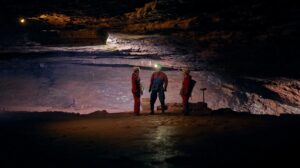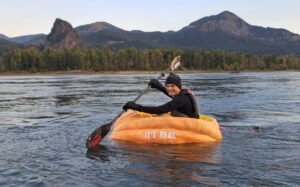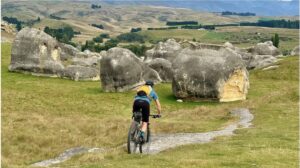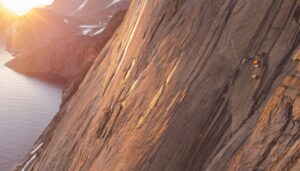Every wilderness expedition has unique pitfalls that depend on the challenges of the environment. To consider the hot, dry parts of the world, ExWeb asked desert travelers Louis-Philippe Loncke, Alice Morrison and Roland Banas what to avoid in their chosen world.
1. Underestimating how much water you’ll need

Photo: Alice Morrison
This sounds obvious, but on a long desert expedition, too little water leads to a growing deficit that can become very dangerous after a few days. The best-case scenario is that your body won’t function as well as normal: You are slower and you recover slower. The worst-case scenario is that it will kill you. You also need to consider where you are getting your water from, whether you are walking with camels, which also need water, and whether you have a safety vehicle that can help replenish your water stock.
In calculating your water needs, include everything that could possibly use water — dried meals, for example — and how you can avoid wasting it. Remember also that the more you eat, the more water you need for digestion. Eating slowly throughout the day, with frequent snacks rather than a large lunch, helps lessen water usage. So does breathing through your nose: mouth breathing dries out the inside of your mouth and makes you much thirstier.
2. Scorpions

A very few scorpions have a fatal sting, but all scorpion stings hurt and can be debilitating. Scorpions are most prevalent when deserts are at their hottest, so by avoiding spring and summer, you reduce your chances of running into them. Never pick up a stone without rolling it over with your foot first, since scorpions tend to burrow under large flat stones. Always zip up your tent so that it has no entry points and cover your walking boots at night so scorpions can’t make a home in them.
3. Relying on your internal compass
Landscape features are few and far between in the desert. It is incredibly easy to become disoriented and difficult to judge distance when there are no trees, houses and other familiar reference points for scale.
Apart from the usual compass and GPS, many desert travelers use the sun as a backup navigation tool. In the northern hemisphere, everywhere in the world, the sun is always due south at local noon. You can use this anchor point to hold your course throughout the day.
4. Wearing tight, dark clothes

Photo: Jerry Kobalenko
Sounds obvious, but loose-fitting, lightly colored clothing that covers the entire body is essential. Deserts lack shade, so having skin on show is a recipe for discomfort or disaster. Despite the heat, you need to be covered head to toe.
5. The hottest part of the day

Photo: louis-philippe-loncke.com
If your body overheats, you become highly inefficient and can even get heatstroke. If it is simply too hot, stop and rest. Desert travelers sometimes walk at night to avoid the worst of the heat. At night, you can even roll in the chilled sand to cool off and minimize sweating.
It’s essential to prepare your body for desert travel by acclimatizing. At least two weeks of training in the heat is recommended, including 90 minutes of mild exercise each day.
6. Setting a scorching pace

Death Valley, Nevada.
In the cold, you often speed up to keep yourself warm, but this is the last thing you want to do in the heat. Extreme exertion causes sweat to pour from your body and increases water needs. You want to drink the minimum amount of water per mile covered, which means walking slowly enough to minimize sweat and keep your heart rate low. It may take longer to cover the same distance, but it’s better in the long run.
7. Having great expectations

Photo: Alice Morrison
Those who love deserts recognize their austere beauty, but often you will find yourself trekking across flat, empty, barren land for weeks. That is sometimes boring, no matter how sympathetically you respond to a desert’s simplicity. Stay focused in the moment and relish whatever the day brings you, whether it’s an animal track in the sand or an inconvenient sandstorm. Relinquishing expectations is the best way to avoid disappointment.
8. Wearing shoes that are the right size
In the heat, your feet swell, so wearing the same size of footwear as back home leads to blisters and foot pain. Wear one or two sizes above normal, depending on the heat. Make sure that the shoes are breathable and that you regularly remove sand from them, so that the sand doesn’t abrade the skin and create blisters.
9. Wearing a single layer of clothing
Multiple layers seem counterintuitive in the blistering heat, but you need to be able to adjust layers to manage your body temperature. If you are only wearing one thicker layer, you can’t remove anything when it gets too hot. Just carry warm layers for the night, when the desert temperature plummets.
10. Having just one support vehicle

Photo: redmed.com
Most desert expeditions use support vehicles. You may not see them in the expedition film, but they are usually there, just out of the frame. In desert conditions, vehicle breakdowns are common. If you are relying on this support to bail you out of a potential jam, be sure that the support itself won’t have a problem at the same time. It’s similar to polar expeditions, where sledders often bring two satphones, or a satphone and an InReach device.






